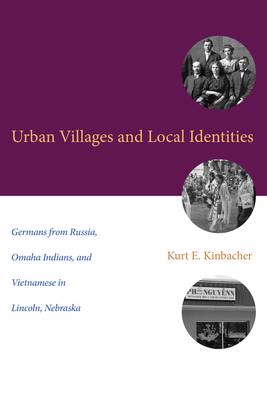
- Afhalen na 1 uur in een winkel met voorraad
- Gratis thuislevering in België vanaf € 30
- Ruim aanbod met 7 miljoen producten
- Afhalen na 1 uur in een winkel met voorraad
- Gratis thuislevering in België vanaf € 30
- Ruim aanbod met 7 miljoen producten
Zoeken
Urban Villages and Local Identities
Germans from Russia, Omaha Indians, and Vietnamese in Lincoln, Nebraska
Kurt E Kinbacher
€ 99,45
+ 198 punten
Uitvoering
Omschrijving
Urban Villages and Local Identities examines immigration to the Great Plains by surveying the experiences of three divergent ethnic groups--Volga Germans, Omaha Indians, and Vietnamese--that settled in enclaves in Lincoln, Nebraska, beginning in 1876, 1941, and 1975, respectively. These urban villages served as safe havens that protected new arrivals from a mainstream that often eschewed unfamiliar cultural practices. Lincoln's large Volga German population was last fully discussed in 1918; Omahas are rarely studied as urban people although sixy-five percent of their population lives in cities; and the growing body of work on Vietnamese tends to be conducted by social scientists rather than historians, few of whom contrast Southeast Asian experiences with those of earlier waves of immigration. As a comparative study, Urban Villages and Local Identities is inspired, in part, by Reinventing Free Labor, by Gunther Peck. By focusing on the experiences of three populations over the course of 130 years, Urban Villages connects two distinct eras of international border crossing and broadens the field of immigration to include Native Americans. Ultimately, the work yields insights into the complexity, flexibility, and durability of cultural identities among ethnic groups and the urban mainstream in one capital city.
Specificaties
Betrokkenen
- Auteur(s):
- Uitgeverij:
Inhoud
- Aantal bladzijden:
- 304
- Taal:
- Engels
- Reeks:
Eigenschappen
- Productcode (EAN):
- 9780896728936
- Verschijningsdatum:
- 21/07/2015
- Uitvoering:
- Hardcover
- Formaat:
- Genaaid
- Afmetingen:
- 211 mm x 236 mm
- Gewicht:
- 589 g

Alleen bij Standaard Boekhandel
+ 198 punten op je klantenkaart van Standaard Boekhandel
Beoordelingen
We publiceren alleen reviews die voldoen aan de voorwaarden voor reviews. Bekijk onze voorwaarden voor reviews.











